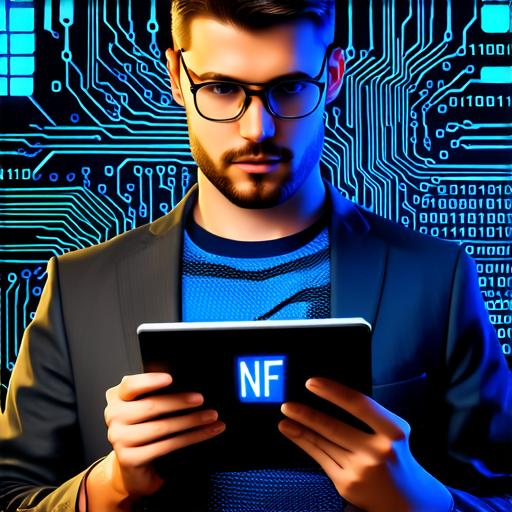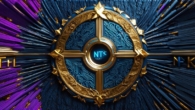
What are the uses of an NFT
NFT stands for Non-Fungible Token. It is a type of digital asset that represents ownership over a unique item. The term was first coined by Kevin McCoy in 2017, and since then, the concept of NFTs has grown in popularity, especially in the art world.
NFTs are different from cryptocurrencies, which are interchangeable digital assets that can be traded on decentralized exchanges. NFTs, on the other hand, represent ownership over a specific item, such as an artwork or a collectible card.
One of the most significant benefits of NFTs is their ability to create scarcity. Since each NFT represents ownership over a unique item, there can only be one owner at any given time. This means that NFTs can be used to represent rare and valuable items, such as collectibles or art pieces.
How do NFTs work?
NFTs are built on blockchain technology, which is a decentralized ledger that records all transactions. Each NFT is stored on the blockchain as a unique digital asset, with a unique identifier called a hash. This identifier allows anyone to verify the authenticity of the NFT and ensure that it has not been tampered with.
NFTs can be created using various platforms and tools, such as Ethereum, which is one of the most popular platforms for creating and buying NFTs. Other platforms include Rarible, OpenSea, and SuperRare.
One of the key features of NFTs is that they are unique and cannot be replicated. This means that once an NFT is created, it can never be duplicated or copied. This creates a sense of exclusivity and rarity, which makes NFTs valuable.
Use cases for NFTs
NFTs have a wide range of potential use cases across various industries. Here are some examples:
Art world – NFTs have gained significant attention in the art world due to their ability to represent ownership over unique pieces of art. This has allowed artists to monetize their work and create scarcity for collectors. For example, artist Beeple sold an NFT representing a digital artwork for $69 million in 2021.
Gaming – NFTs can be used in gaming to represent unique items or characters that can be traded or collected. This creates a sense of exclusivity and rarity, which makes NFTs valuable. For example, the popular game CryptoKitties uses blockchain technology to create unique cats that can be bought and sold as NFTs.
Collectibles – NFTs can be used to represent ownership over collectible items such as sports cards or comic books. This creates a sense of exclusivity and rarity, which makes NFTs valuable. For example, the NBA launched an NFT marketplace that allows fans to buy and sell digital assets related to their favorite teams and players.
Real estate – NFTs can be used in real estate to represent ownership over unique properties or landmarks. This creates a sense of exclusivity and rarity, making the NFT valuable. For example, the first-ever piece of virtual real estate was sold as an NFT for $500,000 in 2019.
Music – NFTs can be used in music to represent ownership over unique audio or video files. This creates a sense of exclusivity and rarity, making the NFT valuable. For example, musician Grimes sold an NFT representing her album “Art Angels” as a collection of unique artwork and audio files.
Sports – NFTs can be used in sports to represent ownership over unique collectibles or digital assets related to the sport. This creates a sense of exclusivity and rarity, making the NFT valuable. For example, the NBA launched an NFT marketplace that allows fans to buy and sell digital assets related to their favorite teams and players.
Fashion – NFTs can be used in fashion to represent ownership over unique clothing or accessories. This creates a sense of exclusivity and rarity, making the NFT valuable. For example, designer Balenciaga created an NFT collection that represents ownership over unique clothing pieces.
Benefits of using NFTs
NFTs offer several benefits to individuals and businesses alike. Here are some of the key benefits:
Ownership and authenticity – NFTs provide a way to own and verify ownership of a unique item or asset. This creates a sense of exclusivity and rarity, which makes the NFT valuable. The blockchain technology used to store NFTs provides a permanent and immutable record of ownership, ensuring that the item is authentic and cannot be tampered with.
Scarcity and rarity – Since each NFT represents ownership over a unique item or asset, it creates scarcity and rarity. This makes the NFT valuable and desirable to collectors and investors.
Monetization opportunities – NFTs provide artists, creators, and businesses with new monetization opportunities. They can sell their work as an NFT, creating a new revenue stream.

Accessibility – NFTs make it possible for anyone to own and trade unique items or assets, regardless of location or financial status. This democratizes ownership and makes it accessible to everyone.
Collectibility – NFTs provide a new way to collect rare and valuable items or assets. They can be bought, sold, and traded like physical collectibles.
Conclusion
NFTs are digital assets that represent ownership over unique items or assets. They have the potential to create scarcity and exclusivity, making them valuable in various industries. Whether you’re an artist, collector, or business owner, NFTs can be a powerful tool for monetizing your work and creating rare and valuable items.







